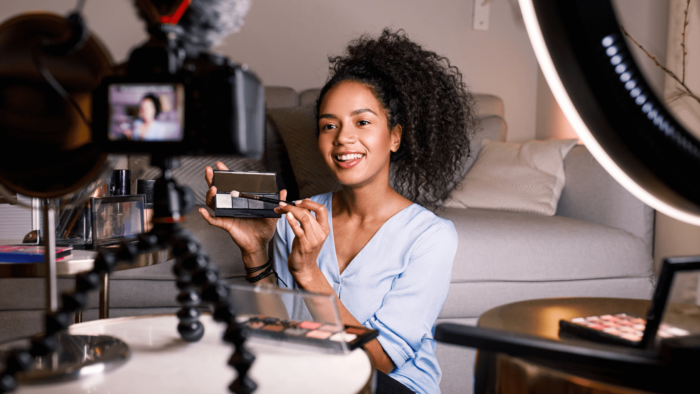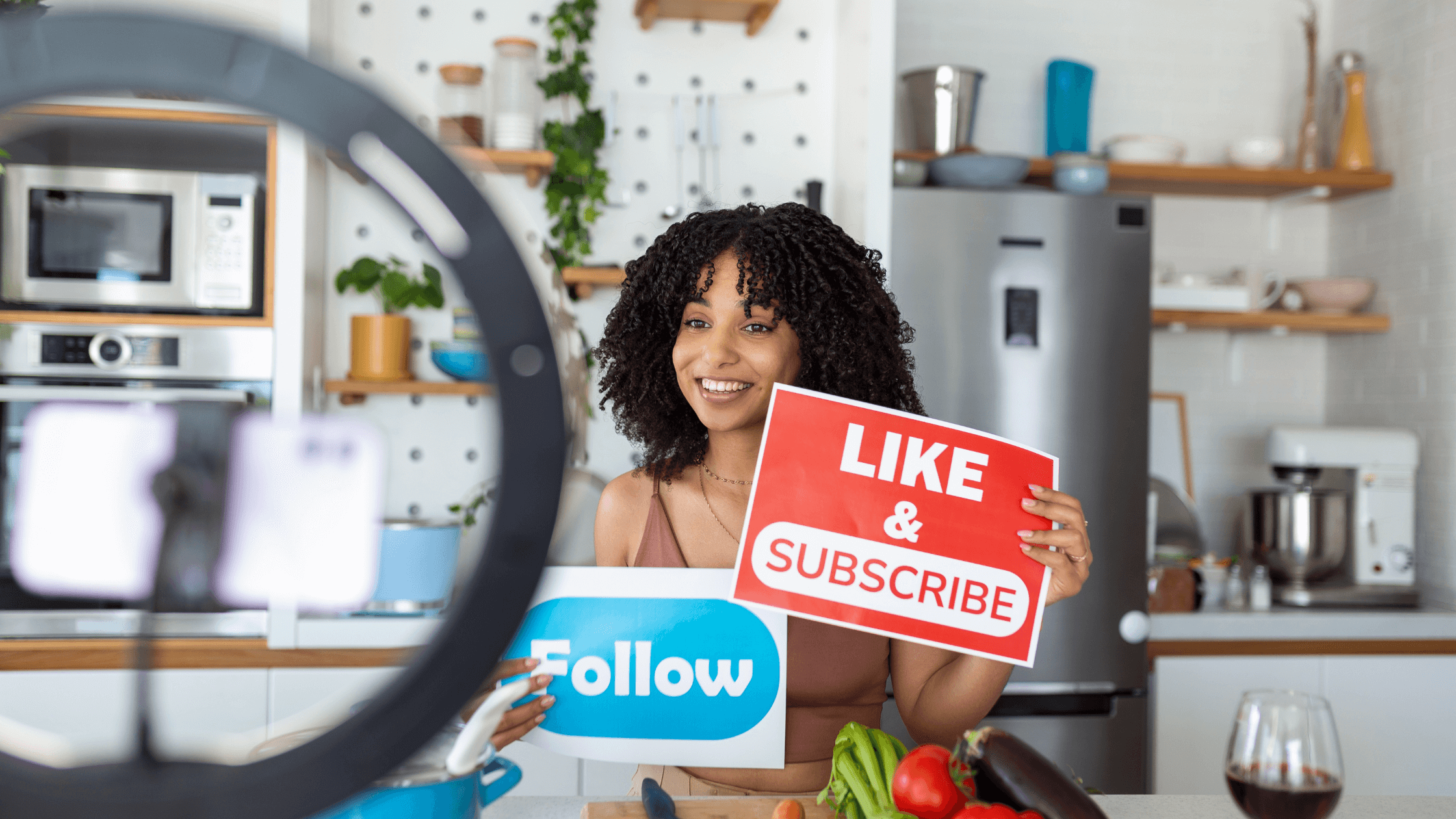The sheer volume of influencer marketing statistics online can be overwhelming.
But don’t worry…
To save you hours of poring over the latest statistics, I combed through the best lists online to find the statistics that are most critical to your influencer marketing strategy and brand awareness.
Let’s dive in!
Statistics on the Influencer Marketing Industry
If you’ve yet to create your first influencer marketing campaign, the following statistics may provide just the motivation you need to spend the time and energy, as well as a share of your marketing budget.
- In the last five years, influencer marketing grew from a $1.7 billion to a $13.8 billion industry. Experts expect it to reach $21.1 billion (by 2024) and to keep growing.
- Experts also predict marketers will collectively spend over $4.5 billion on influencers by the year 2023.
- Around 71% of marketers, and nearly 40% of B2B marketers, plan to increase their influencer marketing budgets, with the majority preferring micro-influencers.
- Over half (51%) of marketers credit influencer marketing for helping them find better customers; 71% cite better quality traffic compared to other marketing methods.
Statistics on Influencer Marketing Strategy and Spending
Having an ear to the ground is critical to the development of an effective content marketing strategy and that includes influencer content.

The following statistics reveal what a significant percentage of U.S. marketers spend on influencer collaborations, along with where the money goes.
5. The most expensive type of influencer content is a sponsored video post.
6. Some of the most popular and beneficial types of influencer content on social media are informative creator posts – i.e., product reviews and how-to videos.
7. 93% of marketers today have made influencer recommendations part of their overall marketing strategy.
8. Around 17% of brands allocate more than half their marketing budget to creator partnerships.
Statistics on Influencer Marketing Engagement and Consumer Trust
Influencer marketing isn’t just about creating buzz; the right influencers help you create a trusting relationship between your target market and your brand.
That trust is what drives the growth of the influencer marketing industry.
9. 41% of consumers learn of new products through influencers every week; 24% do every day!
10. Millennials and Gen Z-ers are the generations most receptive to influencer recommendations and insights.
11. Influencer endorsements influence 22% of the large purchasing decisions made by 18-34 year-olds.
12. Over 60% of American travelers rely on information from their favorite influencers when choosing their next destination.
13. 70% of social media live stream viewers in the U.S. say they’re likely to purchase products or services recommended by influencers.
14. 60% of marketers shared that influencer-generated content performs better and drives more engagement compared to branded posts.
15. 91% of millennial consumers trust online reviews as much as recommendations from their friends and family.
16. Over 75% of consumers trust the opinions they find on social media (from friends and family, as well as influencers) to help them in their purchasing decisions.
17. 92% of consumers trust online influencer recommendations, while only 17% trust friends and family for shopping recommendations.
18. Nearly 25% of consumers will unfollow an influencer if they no longer trust them to be honest and authentic.
Statistics on Content Creators and Influencer Collaborations

So, what about the actual people elevated to influencer status? How do they choose the brands they promote to their followers? And what kinds of influencers are the most effective?
Collective bias in your target market has plenty to do with the type of influencer best suited to your brand. And the fit goes both ways.
19. 68% of blogger influencers prefer direct collaboration with a brand to working with an agency or network.
20. Because influencer marketing specifically targets minority groups and marginalized communities – and is among the first marketing tactics to do so – black creators were among the highest-paid influencers in the U.S. in 2020.
21. 75% of influencers will only work with brands that align with their personal values.
Statistics on Social Media Influencer Marketing
Choosing the right social media influencer can help your brand stand out in your ideal customer’s feed.
The following list of general stats will give you an idea of how crucial social media is to your customers and their purchasing decisions.
22. Social media influencer recommendations – or“whitelisting” – outperforms traditional branded social media ads by 20-50%.
23. Over 90% of consumers engage with influencers every week on Instagram, TikTok, YouTube and Snapchat.
24. 53% of women using social media admit to making purchases after seeing an influencer post.
25. Nearly three quarters of consumers say they would buy something based on the recommendation of an influencer on social media.
26. Brand influencer partnerships increased on every leading social media platform, except Facebook and Twitter, between 2020 and 2021.
27. Instagram users in the U.S. credit an influencer’s recommendation for a purchase they’ve made.
28. Between 2 and 40 million influencers share their recommendations on Instagram.
29. 87% of Instagram influencers have from 1,000 to 50,000 followers.
30. Over 90% of influencer marketers have made Instagram their number one platform.
31. Around 97% of marketers and agency professionals plan to make regular Instagram posts part of their influencer marketing strategy – followed by Instagram Stories, which 83% plan to use.
32. Around 40% of Twitter users say they’ve purchased something as a direct result of an influencer tweet.
33. Twitter influencers created a 5.2x increase in purchase intent, thanks to the combination of brand and influencer tweets, compared to 2.7x with brand tweets alone.
34. According to CNBC, TikTok is the fastest-growing platform in the history of social media.
35. TikTok has between 10,000 and 95,000 influencers on its platform.
36. 34% of TikTok users in the U.S. have made purchases based on the recommendation of an influencer.
37. Micro-influencers on TikTok with fewer than 1,000 followers have, on average, a 9.38% engagement rate – compared to 7.2% on Instagram and only 1.4% on Twitter.
38. YouTube has between 1.5 and 5 million influencers.
39. Nearly three quarters of teenage YouTube subscribers admit they relate more to YouTube influencers than to traditional celebrities.
40. 60% of millennials are more inclined to take advice from YouTube influencers than from traditional media personalities.
41. 44% of Snapchat users are in the 16-24 age group.
42. Nearly 4 in 10 Snapchat users credit influencer recommendations for a purchasing decision.
43. Facebook influences 52% of purchasing decisions, making it one of the most powerful social media platforms.
Statistics on Influencer Marketing ROI
It’s difficult to even guess at the ROI for a specific influencer campaign, let alone the entirety of your marketing efforts for the year ahead. But the following statistics make it clear influencer marketing is a worthy investment.
44. According to 60% of marketers, the ROI of influencer posts consistently surpasses that of branded posts.
45. According to a study by Nielsen Catalina Solutions, the ROI of influencer marketing is 11x greater than that of banner ads.
46. 90% of influencer marketers have found that creator campaigns yield as good or better returns than all other marketing approaches.
47. Businesses earn $5.78 for each dollar spent on influencers, with some seeing as much as $18.
48. Influencer-generated content has an average earned media value (EMV) of between $12 and $18.
EMV is based on the value of all combined third-party mentions; the better the EMV, the more customers your influencer’s content can reach, and the better your ROI.
Statistics on Influencer Marketing Challenges

Influencer marketing has it’s fair share of challenges that you need to be aware of, including:
- Influencer fraud using fake followers, etc.
- Difficulty finding the right influencers
- Conflict with influencers over compensation or content
- Less control over (influencer) content
- Calculating your return on investment (ROI)
Before you invest a significant share of your marketing budget in building relationships with influencers, take some time to get acquainted with the biggest challenges you’re likely to face.
49. For many influencer marketers, the greatest challenge is measuring campaign performance and influencer ROI.
50. Nearly half (45%) of North American consumers use ad blockers.
51. The use of ad-blockers in the U.S. is 37% on laptops and 15% on mobile devices, mostly to block annoying pop-ups and banners.
Consumers are far less keen to block their favorite influencers, whom they don’t see as unwelcome interruptions.
They don’t have to be well-known celebrities to make an impact in your favor. Micro influencers who value authenticity over follower numbers are more relatable to their fans, which raises the value of their content.
Which of these Influencer Marketing Statistics Stood Out for You?
Now that you’ve read through all 51 influencer marketing statistics, which ones did you find most useful or surprising?
Let me know in a comment below!
And if you’re ready to dive head first into influencer marketing, check out these handy resources I’ve compiled:
Influencer Marketing Guide: How to Work With Influencers
The Complete Guide to Getting Started With Influencer Marketing
What is influencer marketing: How to develop your strategy
Hope they help get your influencer marketing campaign off the ground and running!
Ready to really grow your business and your impact? Then, join me for the ONLY business-building event where you’ll leave with a shorter to-do list than when you arrived!
I’ll be sharing exactly how to hone in on what to say, do and sell next in order to grow your business — with proven strategies that I’ve spent over a decade testing.
In fact, this is the ELEVENTH annual Live Your Message LIVE, and many students come back year after year — because the strategies keep working!
We’ll spend 3 days together virtually, working on your business and YOUR unique growth blueprint. As my premium business growth and networking event, tickets routinely go for $1,000 since the information is that valuable.
But today, your ticket is just $147! Grab your seat here.
You’ll ALSO receive your very own copy of my valuable Message to Money Pathway — your unique, highly-customized template that will guide you by the hand to your 6 or 7-figure business (regardless of where you’re starting from).

You’ll Zoom in “overwhelmed” and Zoom out with an exact roadmap for what to say, do and sell next to grow your business in 2023. Here’s the link again to grab your ticket.
See you virtually March 3-5, 2023 🙂
Love it? Hate it? Let me know...
-
I am trying to update and figure things out. This is most helpful thank you
-
Marisa no wonder you say you are trying to slow down.
There is just so much hype out there and many will thank you for doing the precis.
It was so much easier before the digital mine field. -
I want to be an influencer a social sciences degree qualified plus lived experienced one. A person that has passion, enthusiasm, charm, is determined and by sheer will wants to help myself and others by proving my skills as a born influential leader and via the grace of god offered a platform that is engaging real and can be accessed when a question is entered to an app for instance ? I know a lot but not everything I believe the person is the expert not the teacher the student they just don’t know their options, how would I go snooty creating this ?


























Leave a Comment